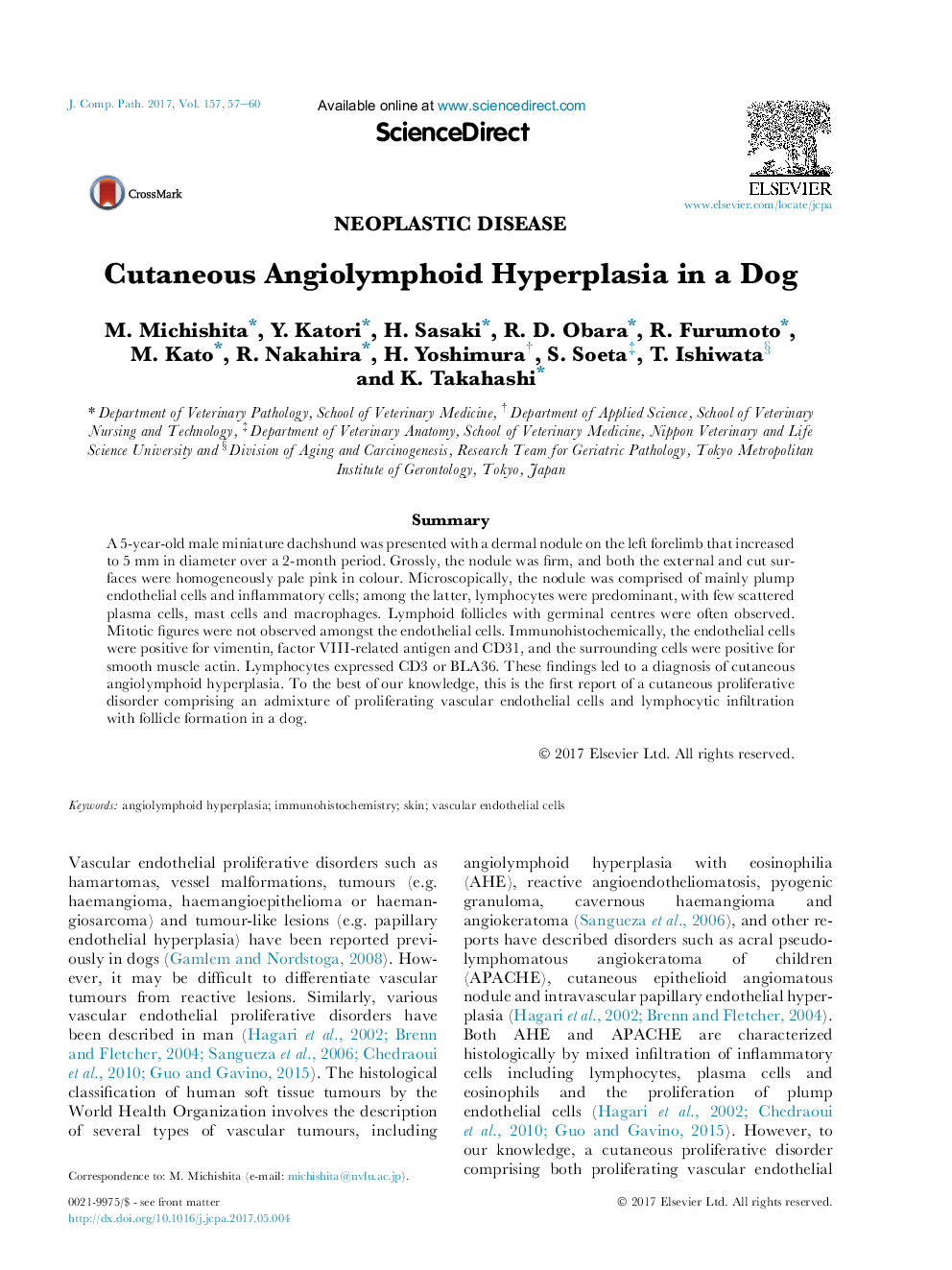| Article ID | Journal | Published Year | Pages | File Type |
|---|---|---|---|---|
| 5541476 | Journal of Comparative Pathology | 2017 | 4 Pages |
Abstract
A 5-year-old male miniature dachshund was presented with a dermal nodule on the left forelimb that increased to 5Â mm in diameter over a 2-month period. Grossly, the nodule was firm, and both the external and cut surfaces were homogeneously pale pink in colour. Microscopically, the nodule was comprised of mainly plump endothelial cells and inflammatory cells; among the latter, lymphocytes were predominant, with few scattered plasma cells, mast cells and macrophages. Lymphoid follicles with germinal centres were often observed. Mitotic figures were not observed amongst the endothelial cells. Immunohistochemically, the endothelial cells were positive for vimentin, factor VIII-related antigen and CD31, and the surrounding cells were positive for smooth muscle actin. Lymphocytes expressed CD3 or BLA36. These findings led to a diagnosis of cutaneous angiolymphoid hyperplasia. To the best of our knowledge, this is the first report of a cutaneous proliferative disorder comprising an admixture of proliferating vascular endothelial cells and lymphocytic infiltration with follicle formation in a dog.
Related Topics
Life Sciences
Agricultural and Biological Sciences
Animal Science and Zoology
Authors
M. Michishita, Y. Katori, H. Sasaki, R.D. Obara, R. Furumoto, M. Kato, R. Nakahira, H. Yoshimura, S. Soeta, T. Ishiwata, K. Takahashi,
